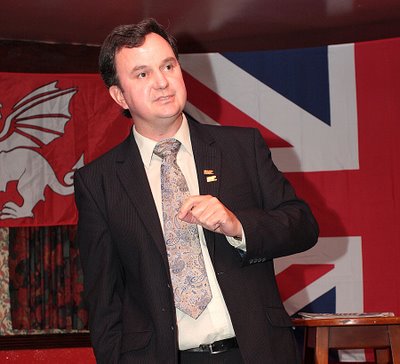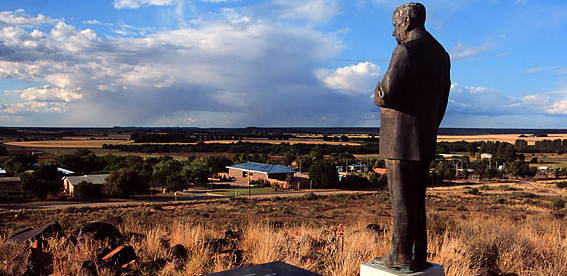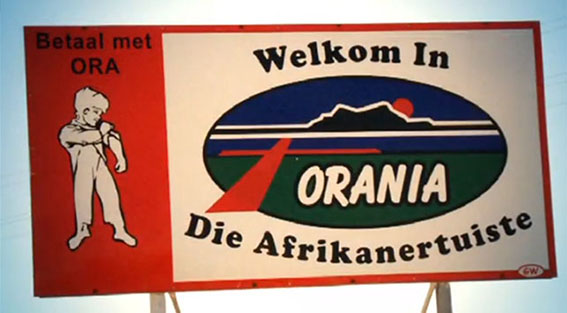
European Survival Strategy in a Darkening World
F. Roger Devlin, American Renaissance, June 21, 2013
Arthur Kemp, Nova Europa: European Survival Strategy in a Darkening World, Ostara Publications, 2013.
Those who attended the 2013 American Renaissance conference saw a change in mood and emphasis from previous gatherings — probably the result of watching Barack Obama coast to reelection with just 39% of the white vote. The new feeling is that the strategy of “awakening” whites and gaining power through democratic electoral means is not working. The demographic shift is too fast and our own progress is too slow; the opportunities we thought we saw are vanishing, and a strategic reorientation is becoming inevitable.
This reorientation will be toward the creation of autonomous white territories that can eventually become independent states, and Arthur Kemp’s Nova Europa is a fine introduction to this subject. The starting point and greatest strength of his thinking is a firm grasp of the territorial nature of politics. In Mr. Kemp’s own words:
Political power comes from physical occupation: not historical rights, not title deeds, not moral rights — only occupation. Those people who occupy a territory determine the nature of the society in that region.
Europeans today even fit the definition of those who wear the ultimate badge of fashionable victimhood, indigenous people. Europeans have a continuous historical link with a particular territory, are characterized by large degree of homogeneity, and are being colonized by aliens.
“Indigenous homelands,” in which natives enjoy special status and protection, have been established all over the world. Brazil alone has 672 such territories; tiny Belize has found room for eight; and dozens more can be found in Australia, Canada, the United States, India, Pakistan and all over Latin America. The United Nations has issued a “Declaration on the Rights of Indigenous Peoples” and maintains a “Permanent Forum on Indigenous Issues.”
The permanent forum would do well to expand its horizons. As Mr. Kemp points out, for several decades now the tables have been turned, and Europeans are in retreat from the peoples they once colonized. Mr. Kemp offers the following facts:
• More than half the residents of Brussels, the “capital of Europe,” are of Third-World origin.
• In 2012, 53 percent of children in Viennese schools were of immigrant origin.
• In the United States, by 2019 a majority of schoolchildren will be non-white.
• The foreign population of Spain rose from 3.2 percent in 1996 to 13.4 percent 11 years later.
• According to a 2004 study, there were 14 million persons of foreign ancestry in France, more than 20 percent of the population.
• In 2009, the Dutch government reported that about 20 percent of the population had “non-Western” roots.
• A 2011 census revealed that the white share of the British population is falling by nearly 8 percent of the total each decade.
As Mr. Kemp notes, “there is currently no area on earth which has been specifically set aside for European people.” Why aren’t the heirs of Western civilization being afforded protections routinely granted to the hunter-gatherers of the Amazon jungle?
It cannot be because such protection would be “white supremacy.” This fashionable bogeyman — imagining for a moment that anybody really advocated it — would be incompatible with the ethnic nationalism Mr. Kemp advocates: “self-determination specifically eschews the claim to rule over others.” Mr. Kemp — a strong critic of apartheid — argues that the demand for black self-rule in South Africa validates white self-rule in Europe and North America.
Nor must a program of territorial independence involve any claim to superiority. Mr. Kemp argues that “the contribution of European man to the world and the well-being of all people is unsurpassed,” but he demands no more for his own people than he would be prepared to grant to pygmies or bushmen.
So far, resistance to mass, non-white immigration has come from nationalist political parties, which have tried to enter government through democratic means. Nowhere have they achieved much success. This is largely because Western democracy has, in Mr. Kemp’s words, “turned into rule by the wealthy elite and powerful lobbies.” While mass immigration is unpopular among ordinary Europeans, social and political elites are fanatically committed to it.
Furthermore, non-whites everywhere vote as a block for the most pro-immigrant parties. Whites not only do not vote along racial lines, but even view such block-voting as somehow morally wrong. This means it is unlikely that any nationalist party will attain power within the brief time whites can be expected to retain their majorities.
Whites must not reject democratic participation. As Mr. Kemp writes, it “remains the best and easiest way to spread the message of ethnonationalism, which is vital for any potential solution to the crisis.” A nationalist party might yet come to power in one or more European countries and reverse the demographic crisis. Even if it occurred in only a single small country, such a development would send shock waves across the continent. The elites have good reason to fear nationalist parties.
But white patriots must adopt new avenues of action as well. Specifically, Mr. Kemp believes they must start building autonomous European communities wherever it is practically possible to do so, and ultimately create a European ethnostate (or states).
The great advantage of creating European communities is that it does not require winning over majorities. Meaningful concrete steps can be taken today by the minority of whites who understand the looming catastrophe. Eventually, such communities could become states. These communities would eventually draw from around the world Europeans who understand the genocidal consequences of multiculturalism. And where else will even liberals find neighborhoods with “good schools” and “low crime?”
The South African town of Orania is a good example of what whites must do. A small minority of Afrikaners have long shared Mr. Kemp’s view that white reliance on black labor was ultimately responsible for the downfall of white South Africa. In 1990, as the demise of apartheid visibly approached, a group of white pioneers bought the deserted village of Orania in the Northern Cape Province for a nominal fee. They chose the town’s barren and seemingly unpromising location for good reasons.
The Northern Cape, with its sparse population, presented the only area of South Africa which could effectively be colonized by Afrikaners with the least amount of disruption to the rest of the country. In 2010, the entire Northern Cape had only 2.3% of the country’s population. Majority Afrikaner occupation could be achieved with only 500,000 or so Afrikaners moving to the area.
The town was founded on three principles: the Oranians were to have their own land, use only their own labor, and create their own institutions. From around two dozen pioneers, it has grown to a current population of over 1,500. The town boasts two schools and seventy local businesses, and is “possibly the only local authority in all South Africa which actually balanced its books in 2012.”
In 2004, Orania introduced its own currency, the Ora, which is a valid method of payment within the town borders. The Ora trades on par with the South African Rand and is underwritten by the local savings and credit union. The new currency keeps money within the community.
In 2012, the British Sunday Times, a paper not noted for white advocacy, had this to say about Orania:
Building sites are everywhere. Plots of land that went for £1,000 four years ago now change hands for £20,000. There are supermarkets, all manner of other shops, a doctor, dentist, lawyers, architects, two schools and a radio station. Orania has organised many trips to Israel to study Israeli farming techniques — the Israelis too have made the desert bloom. Orania exports jewelry to the whole of South Africa, air-freighted vegetables to British supermarkets and pecan nuts to China. The community is probably the greenest in South Africa: all farming is organic, everything is recycled and alternative energy is used whenever possible. People leave their keys in their cars, live with their doors open and children play, unmonitored, in the street until dark.


